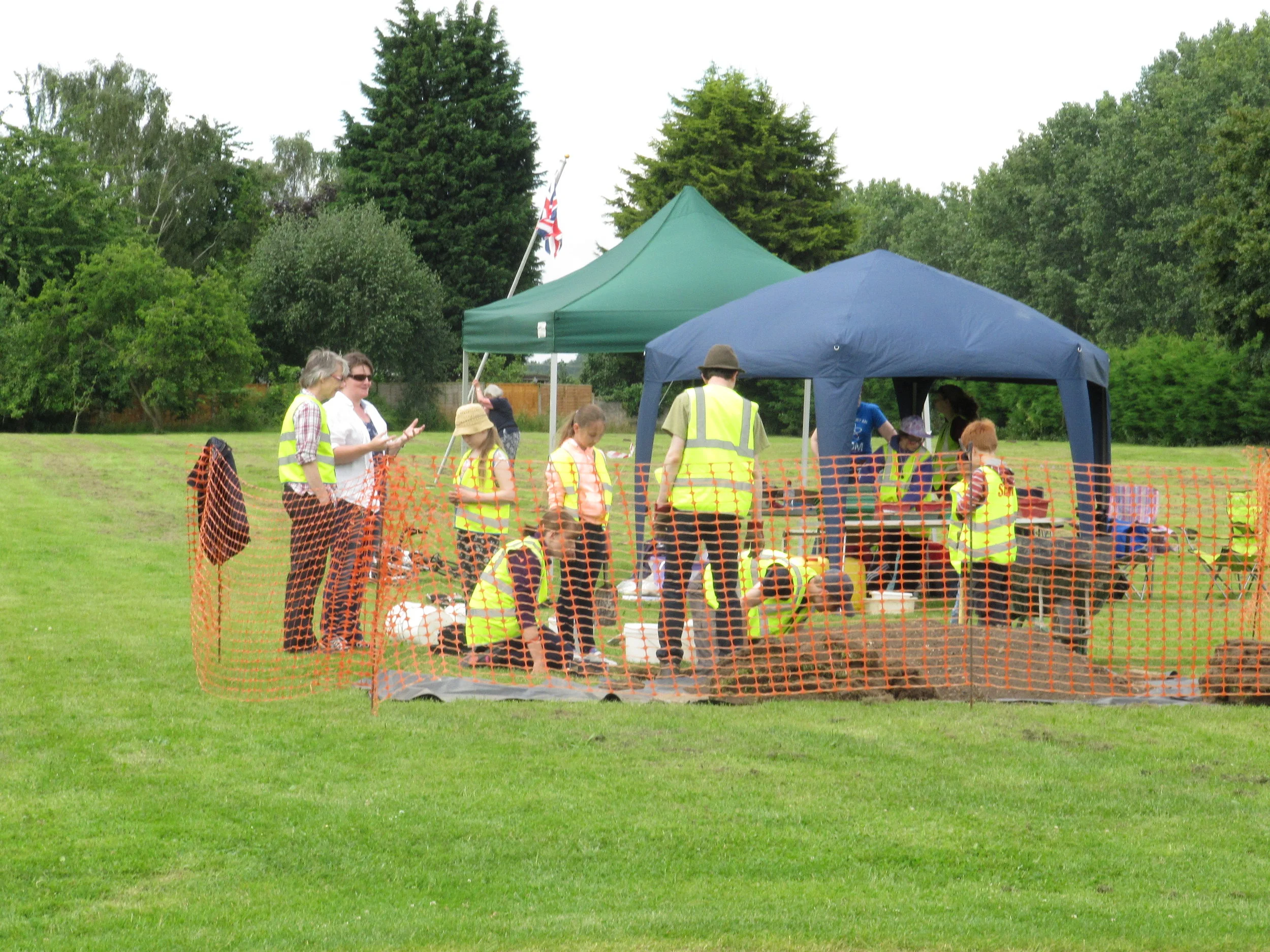Community Excavations
Willington Dovecote
Often we find that we can lend support, help in kind, and expertise to community groups who want to get a bit more involved in the archaeology of their local area. The excavations at Willington Dovecote, just outside Bedford, usually take place as part of the Festival of British Archaeology organised by the Council for British Archaeology (the CBA). The project takes place over a weekend in July and is a collaboration between Young Archaeologists Club, The Higgins (Bedford Museum), the National Trust (the site owner), Willington Local History Society and Albion Archaeology. A number of Albion’s team regularly volunteer as Young Archaeologist Club leaders and the excavations at Willington have become a regular part of the calendar. Volunteers, members of the Young Archaeologists’ Club and members of the local community get a chance to have a go at excavation, finds washing and survey, and throughout the weekend visitors to the site are given tours and talks.
Willington dovecote was built c. 1540 by the then lord of the manor, Sir John Gostwick (b .1490s, d. 1544). John Gostwick worked for Thomas (later Cardinal) Wolsey and had been granted a coat of arms in 1523. He bought the manor of Willington in 1529 from the Duke of Norfolk, undertaking a programme of building works which included the rebuilding of the old medieval manor house and in the late 1530s/early 1540s a new stable block and dovecote. Possibly through connections with Cromwell, Gostwick was granted stone from the Newnham Priory (Bedford) after its dissolution in 1540: it is said to have been used to build the dovecote. Antiquary John Leyland described the new house as ‘sumptuous’ and mentioned running water in lead pipes! Henry VIII allegedly stayed a night at Willington in 1541. The Gostwicks owned Willington until 1720, when the manor passed to the Marlborough family. Most of the remaining buildings demolished at the behest of the Duke of Bedford in 19th century; now only the dovecote and part of the stables remain.
In the 19th Century other buildings associated with the complex were demolished and the excavations at Willington have been trying to locate these and to investigate what remains of them. Over the years we have found evidence for the wall foundations for the Great Barn and at least one other building. The foundations in places are reasonably substantial and the finds, in particular brick, tile and stone have been numerous. The children and adults (both non archaeologists and Albion staff) have a fantastic weekend and a good time is had by all.


